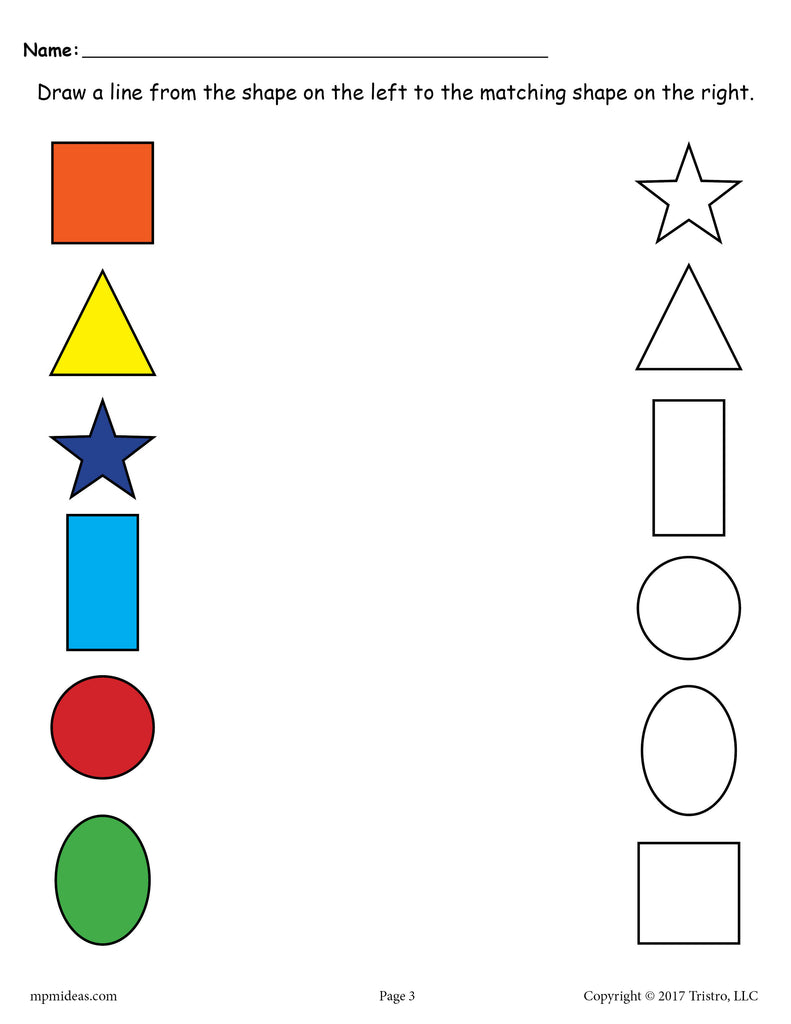
These basic shapes are a great place to start with your toddler or preschooler. They may be in different colors and textures, but retain the same recognizable form.

They may be found in knob puzzles, picture books, coloring pages, and magnetic tiles. Most children’s toys include basic shapes like circles and rectangles. Some rectangles are “tall” and others are “long,” and ovals vary in length. She will be able to recognize that not all triangles are equilateral, for example. The different sizes and orientations of these “real world” shapes will help expand your young child’s mathematical thinking abilities. When you spend time noticing the shapes of common household objects, your child will begin to notice them, too. The cereal box at the breakfast table is probably shaped like a rectangle. Your kitchen window may be shaped like a square. As you go about your day, help your child notice the shapes as they occur naturally.įor example, the bottom of your coffee cup is the shape of the circle. These shapes are easy for kids to identify in the real world and through toys. These include the circle, triangle, square, rectangle and oval. But, early childhood teachers typically begin with the most 2D familiar shapes. There is no universal rule about which shapes should be introduced first, second, third, etc. Pointing out where you see prime shapes in your everyday life is a great place to start. You can always be teaching and reinforcing basic shapes, even if you’re not sitting down for a special shape activity. Teaching shapes should be an ongoing endeavor that both teachers and parents support. Present opportunities to practice comparison and classificationĭid you know your toddler is building a foundation for strong visual-spatial reasoning when she builds with her colorful wooden blocks? Your preschooler is learning to read not only by listening to stories and practicing with letters, but also by sorting shapes!.Serve as a precursor to recognizing and differentiating among letters & numbers.They also help children learn across content areas because they:

Identifying, classifying, and creating basic shapes helps kids develop a strong basis for mathematical reasoning and literacy. Shapes provide a powerful foundation for learning. The activities we will share provide entry points for children at all readiness levels – from pre-reading toddlers who know just a few words to elementary schoolers ready for enrichment. Please keep in mind, though, that all children develop at different paces. Children as young as two may be ready to learn basic shapes like circles, squares, and triangles. Young children are drawn to the contrast of black and white picture books – this is one great tool for teaching basic shapes to your very young child.Īs they grow into toddlers and preschoolers puzzles, blocks, magnetic tiles, and various arts and crafts activities are excellent ways to teach shapes. In the very early years, babies absorb information by watching and listening to the people and events in their sight. It is never too early to introduce basic shapes, just as it is never too early to introduce talking, singing or reading.Ĭhildren begin learning about the world around them from as early as infancy.
#Pictures of shapes for kindergarten how to
So, as you think through when, where, and how to do shape activities with your child, keep in mind that the most effective learning occurs when children take an active role. Young ones learn best through imaginative play and active engagement.

Simple cutouts from construction paper or felt fabric also work great. Teaching basic shapes is one of the most fun learning objectives for teachers and parents alike, in part because there are endless ways to do it! You can use anything and everything from wooden blocks to puzzles to magnetic tiles. (Who knew a triangle or a circle had so much power?!) It also builds background knowledge needed for learning the alphabet. Identifying, categorizing, and creating shapes help young children gain mathematical reasoning skills in their early childhood years that will set them up for success later in school. Trust and believe will be helpful for you.ĭid you know that helping children learn shapes promotes a strong foundation for both math and literacy? Still, we would include only products we actually Something through one of the links, we may receive a commission at noĮxtra charge to you.


 0 kommentar(er)
0 kommentar(er)
